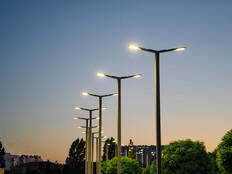City Identifies Neighborhoods Based on Safety and Security Concerns
In the long term, Malik plans for smart streetlights to support Vision Zero. Working with US Ignite, Philadelphia tested methods of counting people and vehicles and observing the flow of them on streets. The city conducted this counting without personally identifiable information in order to preserve privacy.
Using that data, Philadelphia examined areas with high traffic congestion and assessed means to redesign those streets, Malik said. This data collection will help stem the number of vehicle crashes and potentially save lives.
No matter how quickly Philadelphia moves ahead with the installation, the city will require 24 months to install 120,000 streetlights, Schapira said. “So, somebody’s going to have to get it first, and somebody’s going to have to get it last.”
DISCOVER: How smart street lighting can enhance services and public safety.
Philadelphia convened its 10 city districts to determine timetables and to prioritize neighborhoods where the streetlights could make the biggest difference. A neighborhood may receive priority, for example, if the city saw a high number of vehicle accidents and pedestrian safety challenges there. The city also may deploy streetlights to areas that experience high rates of crime in an effort to mitigate problems.
Philadelphia’s Smart Initiative Began After Long Consideration
Schapira explained the municipality was discussing smart city initiatives and a streetlight project six years ago when she first joined her agency. Now that the project has finally launched, the Philadelphia Energy Authority functions as a project management support group, she said.
“We run a steering committee made up of city departmental folks who have interest in this project. It’ll touch every single neighborhood in Philadelphia. So, we’re a little bit in the weeds and a little bit big-picture. We’re here to just make sure it goes smoothly,” Schapira said.
Philadelphia is a bit behind the curve in embracing a project like smart streetlights, Schapira noted. Many years ago, the city watched as other municipalities moved ahead. Philadelphia paid particular attention to Chicago’s experience, she added.
MORE FROM STATETECH: Raleigh's smart city program tackles traffic management.
“Everybody knew that this was something we needed to do, but there was a lot of inertia in the other direction and a lot of concerns that may have been rooted in real things or maybe not in real things, and then there were all of the usual difficulties of getting something off the ground,” she said. “We talked to the Chicago folks very early and were really excited by the way they had structured their project, where they had that separate authority to keep the project moving, so you weren’t really as bogged down by each department.”
Gaining institutional buy-in from all city stakeholders took a while, but leaders picked up the pace when they realized they were taking a long time to advance smart streetlights.
“We’re one of the last big cities to get them, and that started resonating with folks. This project will reduce our city’s carbon footprint by 9 percent just from one project alone. So, that was very compelling,” Schapira said.











